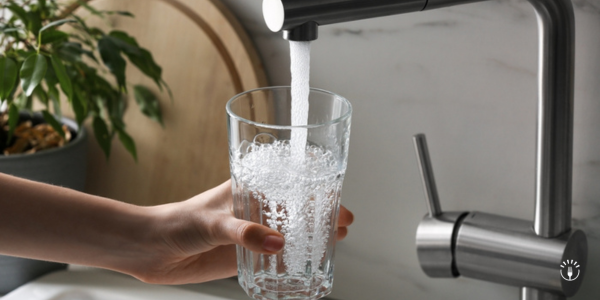
Is gluten cross-contamination a myth? According to some new research, to a very slight degree. (We'll get to that.)
But preventing gluten cross-contamination - or cross-contact - is in fact a very real need for children and adults with celiac disease. In fact, eating gluten for some can cascade short-term unpleasant symptoms that might eventually lead to long-term health issues.
Fortunately, several tips and efforts can prevent gluten cross-contamination. Whether preparing gluten-free foods at home or selecting gluten-free items at the store, use these cross-contact tips to minimize and avoid gluten exposure.
What Is Gluten Cross-Contamination?
The USDA defines cross-contamination as "the transfer of harmful bacteria to food from other foods, cutting boards, and utensils if they are not handled properly. This is especially true when handling raw meat, poultry, eggs, and seafood, so keep these foods and their juices away from already cooked or ready-to-eat foods and fresh produce."
The definition excludes gluten, the protein found in wheat, rye, barley, and triticale, as cross-contamination embodies bacteria. This has prompted organizations to prefer the term cross-contact, which occurs when one food comes into contact with another food and their proteins mix.
However, gluten cross-contamination and cross-contact refer to when a gluten-free food or food product is exposed to a gluten-containing ingredient or food.
Proper education on following a gluten-free diet can alleviate associated gastrointestinal symptoms and decrease the potential for several vitamin and mineral deficiencies. Still, accidental gluten intake can occur from unlikely sources and cross-contamination.
Avoiding Gluten Cross-Contamination at Home
Reducing and avoiding gluten cross-contact starts at home, as this is where the most control lies. Taking proper cleaning and cooking measures can
Clean All Cooking Surfaces
Cleaning will not kill off gluten but washing cooking surfaces can help eliminate any existing particles. First dry wipe any leftover particles then thoroughly wash the surface with dish soap and water, warm preferred.
Also equally as important, use towels that are clean and have not been in contact with gluten.
Use Separate Appliances
Prevent cross-contact of gluten by using separate appliances, including toasters and air fryers. For instance, designate one toaster for gluten bread and another for gluten-free bread.
If lacking a separate toaster, toaster safe bags are viable options as well. Make sure to thoroughly clean and sanitize appliances after each use as well.
Identify with Colored Stickers
Marking gluten-free foods and appliances can also be helpful to reduce cross-contact at home. A color-coding system can also make eating gluten-free much simpler at a glance.
Verify Medications & Supplements
Gluten is not only found in foods but in medications and dietary supplements as well. Over-the-counter or prescription, the FALCPA does not comply with medications. Before starting on a new medication, call the physician and pharmacist and verify the product is gluten-free to verify its ingredients.
Dietary supplements are generally recommended to combat nutritional deficiencies often seen in gluten-related disorders. Since some supplements do contain gluten, it is important to determine if it is in fact gluten-free.
"Contains wheat" is also commonly seen on supplement products containing gluten. But unlike medications, dietary supplements are required to indicate clearly if wheat is an ingredient.
Check Unlikely Gluten Sources
If following a gluten-free diet and still having signs and symptoms, look to other unlikely culprits like toothpaste, mouthwash, and cosmetics.
Avoiding Gluten Cross-Contamination When Eating Out
Since grocery shopping and cooking at home offer the most gluten cross-contact control, eating out might seem overwhelming. However, dining out safety can still be on the table when using these tips.
Look at the Menu Prior
As gluten-free diets continue to be popular, most restaurants are growing their gluten-free offerings. Looking at the menu prior to visiting can help verify gluten-free choices are available and ease stress.
Consult with the Employees
If worried about gluten cross-contact, do not hesitate to consult with the employees. While when in doubt you should sit it out, most restaurants will accommodate gluten-free needs.
Avoid Buffets
Foods from a buffet line have unlimited potential for gluten contamination. Utensils for designated foods can be swapped easily and gluten foods can contaminate their gluten-free neighbor.
All in all, the safest practice would be to order strictly from the menu and avoid the buffet entirely.
Reconsider Fried Food
Frying oil is continuously used in a fast-paced restaurant. Gluten-free foods can become contaminated after the fryer has been exposed to a wide variety of gluten-containing foods.
Avoiding fried foods altogether will decrease the odds of gluten consumption and create an overall healthful diet.
Avoiding Gluten Cross-Contamination at the Grocery Store
Intentional grocery shopping is vital for bringing gluten-free foods into the home. Use these tips to help avoid gluten cross-contact at the grocery store.
Purchase Gluten-Free Foods
While an obvious tip, knowing which foods are gluten-free is essential to prevent cross-contact in the home. Besides, sauces, condiments, and other common foods are hidden sources of gluten.
While gluten-free products are ample in most grocers, like gluten-free pasta and bread, always double-check the food is certified gluten-free from reputable, testing companies.
Focusing on naturally gluten-free foods is also not only helpful but might even “clean up” the diet. This is because fiber-rich produce, lean proteins, and healthy fat sources are likely naturally gluten-free.
Overall, the best practice is to purchase fresh foods or packages identified as "gluten-free" under The Food Allergen and Consumer Protection Act (FALCPA). This act helps ensure foods are at least 20 ppm or lower.
Avoid Unpackaged Bins & Imported Foods
Food bins can easily be contaminated with gluten. The best practice is to avoid these bins to steer on the side of caution.
Other countries also might not test for gluten as diligently if at all. For this reason, try sticking to products that are verified to be gluten-free.
The Gluten Cross-Contamination Myth Debunked
But wait, what about the gluten cross-contact myth? Interestingly, early research suggests gluten transfer risk in common-cooking activities may be lower than once thought.
What’s more, another study suggests cross-contamination with gluten in a kitchen environment may occur. However, kitchen utensils used for preparing GC pasta and for cutting GC bread should not pose a relevant problem to patients with celiac disease, at least in a domestic environment.
The bottom line: Work with a healthcare team to determine what is best for you and your personal situation.
Recapping Gluten Cross-Contamination
Like celiac disease and gluten sensitivities, the gluten-free diet can be complex and overwhelming. However, adhering to these tips can reduce the chance of gluten cross-contact and intake.
Overall, individuals living with celiac disease truly need to eliminate gluten. Talking to a registered dietitian and physician is recommended to identify and determine nutritional needs.





